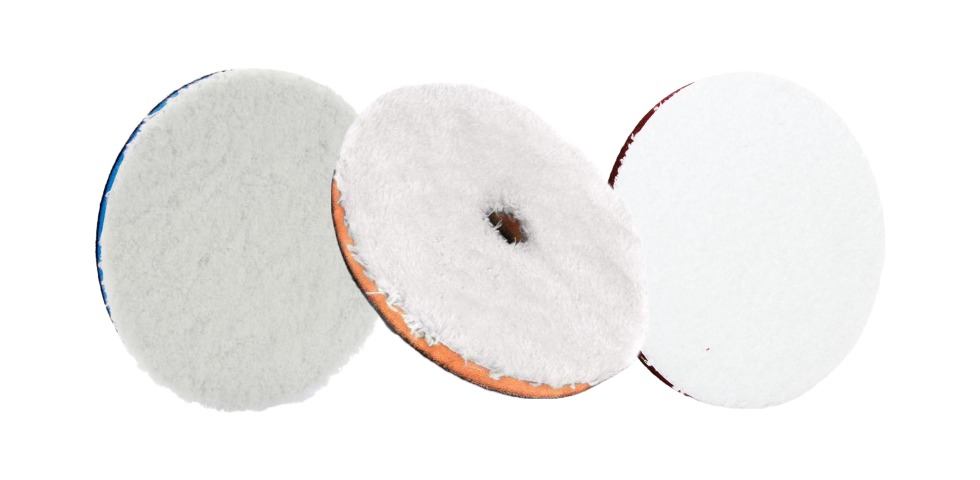
The microfiber pad has changed the way we view paint correction. A quick history lesson to start… Until the past decade, the rotary or at least a forced rotation polisher (i.e. Flex 3401), was considered the primary option for fast and efficient aggressive polishing. Although most enthusiasts and individuals starting out, as well as a large percentage of professionals found themselves more comfortable using a standard Dual Action polisher.
The introduction of microfiber cutting polishing pads along the evolution of more advanced dual action polishers, known as long throw polishers (particular the Rupes Mark II and then III), have made a significant impact on popular modern polishing tool choices. Meguiar’s was the first company to introduce the microfiber cutting pad to the detailing industry. The pairing of Rupes polishers and the Meguiars Microfiber Cutting Pad were game changers for professionals.
But then came the others…
The Lake Country microfiber cutting pads have become my favorite microfiber cutting pads recently. I personally believe the Lake Country microfiber pads provide a slightly more aggressive polishing session, but realistically the difference is negligible. I am quite sure some detailers would argue the Meguiar’s Microfiber pads are more aggressive.
Now introducing the Oberk Microfiber Pads. Oberk, the proverbial newer kid on the block.
I have done some comparison testing between the Oberk microfiber option and Lake Country microfiber using primarily the Rupes LHR 75E Mini polisher. Most of the testing was done using Jescar Correcting Compound, with Sonax Cutmax being an occasional outlier. Multiple cars and several panels were involved in the test over the course of a year to provide an honest assessment. Below are two pictures facing the bumper of a Dodge Charger. The before and the left side received one aggressive cutting (compound step) in a 2-stage correction.
Before working on the bumper.
This is after one polishing session using Rupes Mini and Jescar Correcting Compound.
If you look closely at the image above, you can see a subtle milky appearance of the paint. This is the dual action polishing haze, the damage left behind from an aggressive dual action polishing step. Compared to other microfiber pads, the Oberk pads left the least amount of haze (best finish). Regardless I consider it a mark of professionalism and worthwhile to as a enthusiast to refine the paint with a more gentle polishing step. Jeweling can be considered another way of looking at this second step. Even during times when I am using only a moderately aggressive (foam) pad which leaves minimal haze to my eye, I usually follow up with a refinement step.
Although the Oberk pads did a respectable job of cutting, the level of aggression was not as high as the Meguiar’s or Lake Country. But considering how effective all three pad options are, I do not consider a slightly less aggressive cutting pad to necessarily be a bad choice for you. The one thing I did notice about the Oberk pad was the accumulation of caked on product was not as severe as the Lake Country or Meguiar’s, likely the ‘give and take’ of a less aggressive microfiber cutting pad. The one drawback to using microfiber pads is the more rapid buildup of residue, meaning you will need to use more pads even with frequent cleaning to maintain the effectiveness of your polishing.
I have not owned all three brands long enough to make provide a conclusive comparative analysis of the durability of the Oberk Microfiber Pad. With that said, it does feel like a very premium product. In my opinion I would put the Lake Country and Oberk microfiber pads over the Meguiars microfiber pads, with respect to quality of construction.